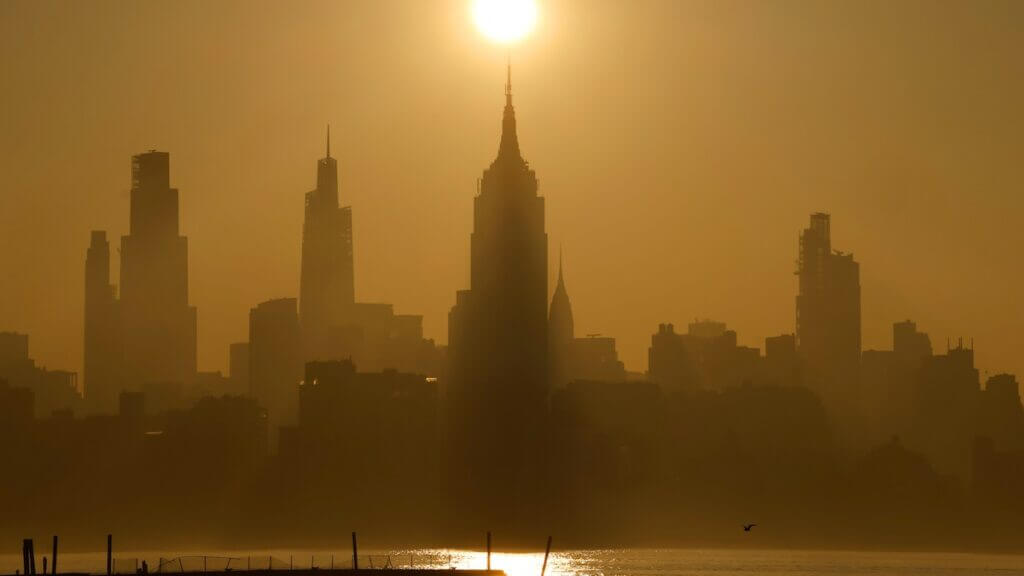Understanding the Impact of Summer Heat Waves and Rising Humidity
The Onset of Extreme Summer Temperatures
This summer, a formidable heat dome has settled over large portions of the Midwest and Eastern United States, bringing unprecedented temperatures coupled with oppressive humidity. This phenomenon occurs when persistent high-pressure systems stagnate over an area, effectively trapping warm air and moisture beneath a “cap,” leading to prolonged periods of intense heat and humidity. Meteorologists warn that such conditions significantly elevate the risk of heat-related health issues, including heat exhaustion and heat stroke, especially as the heat persists over consecutive days.
Deciphering Humidity: What Drives Moisture in the Air?
Humidity refers to the concentration of water vapor present in the atmosphere, primarily generated through the evaporation of water from surfaces like lakes, rivers, and soil. During summer months, increased temperatures accelerate evaporation rates, resulting in higher humidity levels compared to winter when colder temperatures suppress water vapor release.
James Marshall Shepherd, director of the University of Georgia’s Atmospheric Sciences Program, explains, “The more water vapor in the air, the higher the humidity.” Regions with abundant surface water, such as the southeastern U.S., naturally experience greater humidity. Additionally, warm waters in the Gulf of Mexico and prevailing southern winds contribute to moisture influx, intensifying the muggy conditions during summer.
Why Does High Humidity Make Us Feel So Uncomfortable?
Our bodies rely on sweating as a primary cooling mechanism. When internal temperature rises, the hypothalamus signals sweat glands to produce moisture on the skin’s surface. As sweat evaporates, it absorbs heat, helping to lower body temperature. However, the effectiveness of this process hinges on the surrounding air’s capacity to accept moisture.
Mary D. Lemcke-Stampone, climatologist and geography professor at the University of New Hampshire, notes, “The amount of water vapor already in the air determines how much sweat can evaporate from your skin.” When humidity levels are high, the air is nearly saturated with moisture, leaving little room for sweat to evaporate. Consequently, sweat remains on the skin, and the body’s cooling process becomes inefficient.
In contrast, dry environments like deserts facilitate rapid evaporation, which cools the body more effectively despite high temperatures. This difference explains why desert heat often feels less oppressive than humid heat, even at similar temperatures.
The Wet Bulb Temperature: A Measure of Cooling Efficiency
The concept of the “wet bulb temperature” describes the lowest temperature achievable through sweating under specific heat and humidity conditions. It reflects the body’s ability to cool itself; when the wet bulb temperature approaches or exceeds core body temperature (~98.6°F), the body’s natural cooling mechanisms become ineffective, posing serious health risks.
High heat combined with elevated humidity hampers the body’s capacity to dissipate heat, leading to dangerous conditions such as heat exhaustion and heat stroke. The generally accepted threshold for human survival is around 95°F with high humidity, although symptoms can manifest at lower temperatures, such as 88°F, especially during prolonged exposure.
Lemcke-Stampone emphasizes, “When your body can’t cool down efficiently, you’ll experience symptoms like fatigue, nausea, and dizziness, which are signs of heat stress.” Recognizing these signs early is crucial to prevent severe health consequences.
Is Climate Change Amplifying Humidity and Heat Waves?
Scientific studies indicate that climate change is intensifying the frequency and severity of humid heat waves. As global temperatures rise, the atmosphere’s capacity to hold water vapor increases, leading to higher humidity levels. A comprehensive analysis published in February 2025 revealed that over the past four decades, the intensity of humid heat waves has escalated, particularly across the eastern U.S., heightening the danger for vulnerable populations.
Moreover, increased evaporation from lakes, rivers, and other water bodies due to higher temperatures adds more moisture to the air, further exacerbating humidity levels. Urban areas are especially affected because of the heat-retaining properties of asphalt and concrete, which trap warmth and prevent cooling at night. This phenomenon results in persistent high nighttime temperatures, preventing the body from recovering from daytime heat stress.
Allegra N. LeGrande, a climate scientist at NASA’s Goddard Institute, states, “The trend of elevated nighttime temperatures is a clear indicator of climate change’s impact on urban heat islands and overall heat stress.”
Developing Effective Heat Response Strategies
As humidity and heat intensify, proactive measures become essential to safeguard health. Relying solely on air conditioning may not suffice, especially during power outages or when demand exceeds supply. Staying well-hydrated, using fans, and having access to ice can help mitigate internal body temperature increases. Taking cool showers, especially with water from underground pipes, can provide immediate relief, as subterranean water tends to be cooler than surface water sources.
Knowing the locations of local cooling centers is vital for those without access to air conditioning or during electrical grid failures. These centers offer refuge during extreme heat events and are often operated by local governments or community organizations.
It’s also important to recognize that not only the elderly or chronically ill are at risk. Recent research indicates that younger individuals working outdoors or engaging in physical activities are increasingly vulnerable to heat-related illnesses. Therefore, community awareness and check-ins with neighbors, friends, and family-particularly those who may be less able to protect themselves-are crucial.
Preparing for a Warming Future
The ongoing rise in humidity and heat waves underscores the need for comprehensive heat action plans. These should include public education on recognizing early symptoms of heat stress, establishing accessible cooling centers, and promoting community support networks. Urban planning strategies, such as increasing green spaces and reflective surfaces, can also help reduce city heat islands.
In conclusion, understanding the dynamics of humidity and its interaction with rising temperatures is vital for adapting to a changing climate. As heat waves become more intense and frequent, proactive measures and community resilience will be key to protecting public health and ensuring safety during the hottest days ahead.

